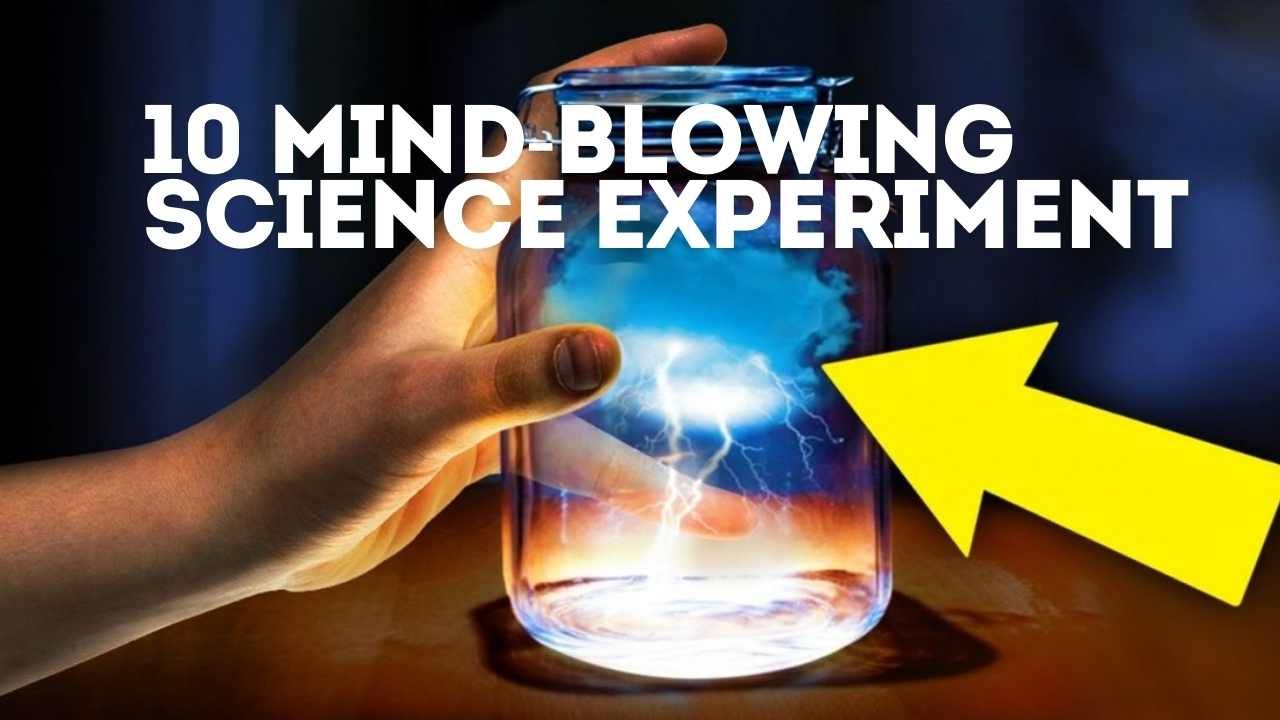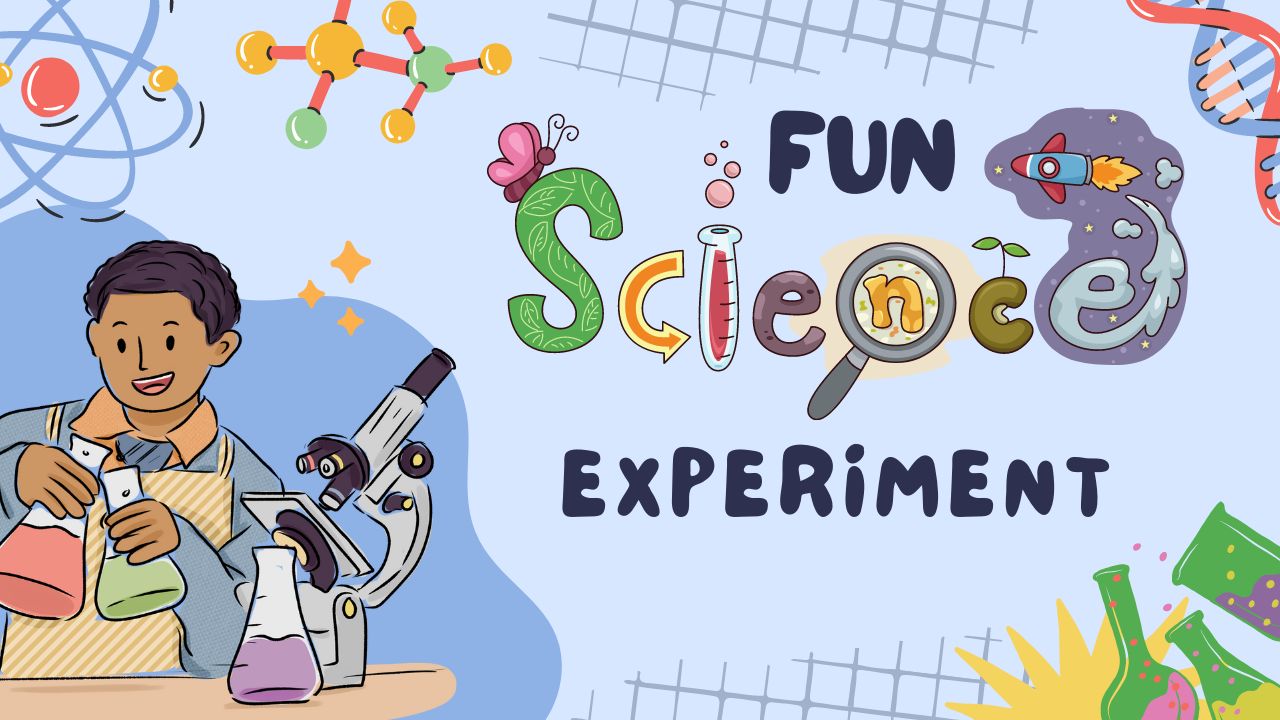
Unleash the Scientist in You with These Fun Experiments
Science is everywhere, from the kitchen to the backyard. And what better way to learn than by doing? Hands-on science experiments are an excellent way to make learning fun and engaging, especially for young minds. Whether you're a homeschooling parent, a STEM enthusiast, or a science educator, these easy-to-follow experiments will captivate your interest and broaden your understanding of various scientific concepts. Let's explore ten mind-blowing science experiments you can do at home!
The Importance of Hands-On Science Learning
Hands-on science learning offers a refreshing change in an age dominated by screens and digital information. It allows learners to engage actively. "Engaging with the material leads to a deeper understanding and better retention." These are scientific principles. By conducting experiments, students can witness the wonders of science firsthand, making abstract concepts more tangible and exciting.
Hands-on learning also fosters critical thinking and problem-solving skills. When students encounter unexpected results, they must figure out what went wrong and how to fix it. This process teaches resilience and encourages a deeper exploration of the subject matter.
Lastly, hands-on science can ignite a passion for STEM fields. By making science fun and accessible, we can inspire the next generation of scientists, engineers, and innovators.
The Criteria for Choosing These 10 Experiments
Selecting suitable experiments is crucial to ensure they are both educational and enjoyable. Here are the criteria we used to choose our top 10 science experiments:
- Safety: All experiments with everyday household items are safe to perform at home.
- Educational Value: Each experiment demonstrates a fundamental scientific principle or concept.
- Engagement: The experiments are visually appealing and interactive, making them attractive for learners of all ages.
- Simplicity: Instructions are straightforward, ensuring that even beginners can complete them.
Exploring the Magic of Density with the Layered Liquids Experiment
Density is a fascinating concept that explains why some objects float while others sink. In this experiment, you'll create a visually stunning demonstration of density using common liquids.
Materials Needed:
- Clear container
- Water
- Honey
- Dish soap
- Vegetable oil
Instructions:
- Fill the clear container about one-third full with water.
- Carefully pour honey into the container, allowing it to settle at the bottom.
- Slowly add dish soap on top of the honey.
- Finally, pour vegetable oil on top of the dish soap.
Explanation:
Observe how the liquids form distinct layers without mixing. Honey, being the densest, settles at the bottom, while vegetable oil, the least dense, floats on top. This experiment vividly illustrates the concept of density and immiscibility.
Creating a Homemade Lava Lamp to Understand Chemical Reactions
Lava lamps are not just retro decorations; they also offer a fantastic way to understand chemical reactions and the interaction between different substances.
Materials Needed:
- Water bottle
- Water
- Food coloring
- Vegetable oil
- Alka-Seltzer tablet
Instructions:
- Fill the water bottle one-quarter full with water.
- Add a few drops of food colouring to the water.
- Fill the rest of the bottle with vegetable oil.
- Drop an Alka-Seltzer tablet into the bottle and watch the magic happen.
Explanation:
When you add Alka-Seltzer to water, it creates a fizzy reaction as it produces carbon dioxide. So cool! Bubbles. These bubbles attach to the coloured water droplets, causing them to rise through the oil. Once they reach the top, the gas escapes and the water droplets sink back down. This continuous cycle creates the mesmerizing lava lamp effect.
Investigating Air Pressure with the Egg in a Bottle Trick
Air pressure is a powerful force that impacts our daily lives. This classic experiment demonstrates the principles of air pressure and vacuums in a fun and surprising way.
Materials Needed:
- Glass bottle with a narrow opening
- Peeled, hard-boiled egg
- Matches or lighter
- Small piece of paper
Instructions:
- Light the paper on fire and quickly drop it into the bottle.
- Immediately place the peeled egg in the mouth of the bottle.
- Watch as the egg gets sucked into the bottle.
Explanation:
The burning paper heats the air inside the bottle, causing it to expand. When the flame goes out, the air cools and contracts, creating lower pressure inside the bottle than outside. The higher external air pressure pushes the egg into the bottle.
Building Your Electromagnet and Understanding the Basics of Magnetism
Electromagnets are fascinating devices that illustrate the relationship between electricity and magnetism. This experiment will show you how to make a simple electromagnet at home.
Materials Needed:
- Iron nail
- Insulated copper wire
- Battery
- Small paper clips
Instructions:
- Tightly wrap the copper wire around the iron nail, freeing two ends.
- Attach the ends of the wire to the battery terminals.
- Test your electromagnet by picking up small paper clips.
Explanation:
When the battery is connected, an electric current flows through the wire, creating a magnetic field around the nail. This magnetic field turns the nail into a magnet, capable of picking up small metal objects. Disconnecting the battery stops the current and the magnetic field, demonstrating the principles of electromagnetism.
Making Slime - A Fun and Educational Material Science Experiment
Slime is fun to play with and offers an excellent way to learn about polymers and non-Newtonian fluids.
Materials Needed:
- School glue
- Liquid starch
- Food coloring (optional)
Instructions:
- Combine equal parts of school glue and liquid starch in a bowl.
- Mix well until a slime consistency forms.
- Add food colouring for fun variations.
Explanation:
The glue contains polymer molecules that form a network that traps water, creating a stretchy, gooey substance when mixed with the liquid starch. This experiment introduces the properties of polymers and non-Newtonian fluids, which behave differently than typical liquids and solids.
Understanding the Water Cycle with a Simple Distillation Experiment
Distillation is a process used to separate mixtures based on differences in their boiling points. This experiment demonstrates the water cycle and the principles of distillation.
Materials Needed:
- Pot
- Heat source
- Lid
- Container to collect distilled water
Instructions:
- Fill the pot with water and place it on the heat source.
- Position the lid upside down on the pot.
- Heat the water until it boils, and let the steam collect in the lid.
- Capture the condensed steam (now distilled water) in a separate container.
Explanation:
Boiling the water turns it into steam, which rises and collects on the cooler lid. This steam then condenses into liquid water, collected in a separate container. This process mimics the natural water cycle, demonstrating evaporation and condensation.
Exploring the Science of Sound with DIY Musical Instruments
Sound is a fascinating phenomenon that can be explored using simple DIY musical instruments. This experiment will help you understand the principles of sound and vibration.
Materials Needed:
- Straws
- Rubber bands
- Empty containers
- Water
Instructions:
- Create a straw flute by cutting slits into one end of a straw and blowing through it.
- Make a rubber band guitar by stretching rubber bands around an empty container.
- Construct a water xylophone by filling containers with varying amounts of water and tapping them with a spoon.
Explanation:
Each instrument demonstrates the principles of sound and vibration. The straw flute produces sound as air vibrates through the slits. The rubber band guitar creates sound when the stretched bands vibrate. The water xylophone shows how different water levels create varying pitches due to changes in the speed of sound waves through the water.
Growing Crystals at Home - A Lesson in Saturation and Supersaturation
Growing crystals is a visually captivating way to explore the concepts of saturation and supersaturation.
Materials Needed:
- Salt or sugar
- Hot water
- Clean container
- String
Instructions:
- Dissolve salt or sugar in hot water until no more will dissolve.
- Pour the saturated solution into a clean container.
- Suspend a string in the container and allow it to cool.
- Observe crystal growth over several days.
Explanation:
When the solution cools, it becomes supersaturated, holding more dissolved salt or sugar than at a lower temperature. The excess salt or sugar crystallizes on the string, forming beautiful crystals. This experiment illustrates the concepts of saturation and crystallization.
Engineering Challenge - Building a Strong and Stable Structure
Engineering challenges are a great way to develop problem-solving skills and understand the principles of structural stability.
Materials Needed:
- Spaghetti
- Marshmallows
Instructions:
- Use spaghetti and marshmallows to build the most muscular, most stable structure.
- Test the stability of your structure by adding weight or gently shaking it.
Explanation:
This activity introduces the principles of engineering and structural stability. You'll learn how various shapes and structures can withstand different forces by experimenting with different designs and configurations. It's a fun and practical way to explore the basics of engineering.
Solar Energy - Making a Solar Oven to Learn About Renewable Energy
Renewable energy is an essential concept in today's world. This experiment will help you understand how solar energy can be harnessed to cook food.
Materials Needed:
- Pizza box
- Aluminium foil
- Plastic wrap
- Black construction paper
Instructions:
- Line the inside of the pizza box with aluminium foil.
- Place black construction paper at the bottom of the box.
- Cover the opening with plastic wrap to create an airtight seal.
- Place the box in direct sunlight and use it to cook a small snack.
Explanation:
The aluminium foil reflects sunlight into the box, while the black construction paper absorbs the heat. The plastic wrap traps the heat inside, allowing you to cook food using solar energy. This experiment demonstrates the principles of renewable energy and the potential of solar power.
Wrapping Up Your Scientific Adventure
These ten science experiments are fun and engaging and offer valuable insights into various scientific principles. These experiments provide a hands-on approach to STEM learning, from understanding density and chemical reactions to exploring electromagnetism and renewable energy.
By conducting these experiments, you'll understand the world around you and develop essential critical thinking and problem-solving skills. Whether you're a homeschooling parent, a STEM enthusiast, or a science educator, these experiments will captivate and inspire you.
Ready to take your love for science to the next level? Sign up for our [newsletter/online course/community] and join a community of like-minded learners passionate about STEM education. Happy experimenting!









